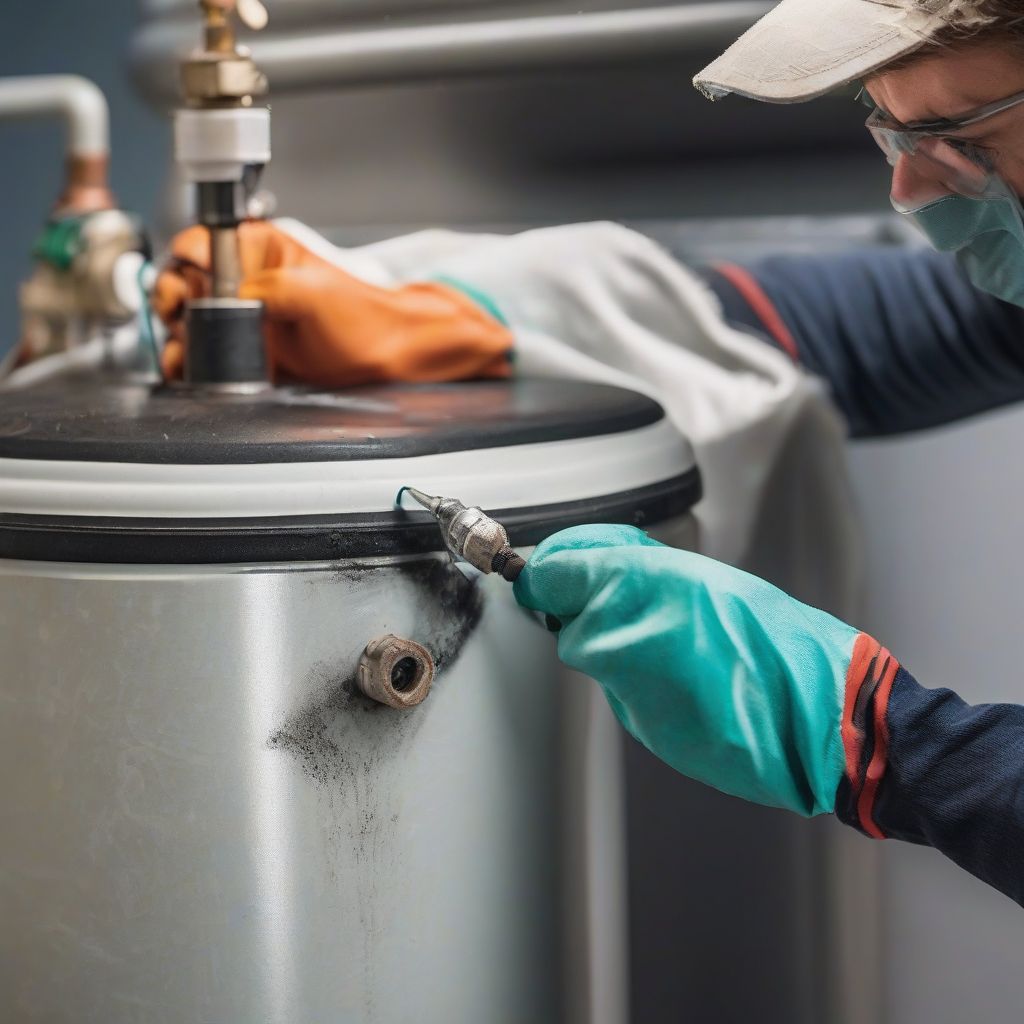Imagine stepping into a cold shower on a chilly morning because your water heater isn’t working. Frustrating, right? A gas water heater is a fantastic appliance—until it stops working. One common issue many homeowners encounter is the need to relight their gas water heaters.
Whether it’s due to a recent power outage or simply the pilot light going out, knowing how to safely relight your gas water heater can save you a lot of inconvenience (and cold showers!).
This guide provides a detailed walkthrough of the process, emphasizing safety precautions and offering solutions to common problems.
Understanding Your Gas Water Heater
Before diving into the “how-to,” it’s crucial to understand the basic components of a gas water heater and the role the pilot light plays.
Pilot Light: The Heart of the Matter
The pilot light is a small, continuously burning flame that ignites the main gas burner when you turn on the hot water tap. It’s the unsung hero of your hot showers and warm dishwater.
Common Reasons for Pilot Light Outage
Several things can cause your pilot light to go out:
- Drafts: A strong draft can easily extinguish the pilot light, especially in older models.
- Dirt and Debris: Accumulated dirt and debris can clog the pilot light tube, preventing the flow of gas.
- Faulty Thermocouple: The thermocouple is a safety device that shuts off the gas supply if the pilot light is out. If it malfunctions, it can prevent the pilot light from staying lit.
Relighting Your Gas Water Heater: A Step-by-Step Guide
Relighting your gas water heater might seem daunting, but it’s relatively simple with these steps:
1. Safety First!
- Ventilation is Key: Ensure the area around the water heater is well-ventilated. Open a window and doors to allow fresh air to circulate.
- Locate the Gas Shut-Off Valve: Familiarize yourself with the gas shut-off valve for your water heater. In case of a gas smell or emergency, immediately shut off the gas supply.
- Keep a Fire Extinguisher Handy: It’s always better to be safe than sorry. Keep a fire extinguisher nearby while working with gas appliances.
2. Gather Your Tools:
- Long-nosed lighter or matches
- Adjustable wrench (if needed)
- Wire brush or pipe cleaner
3. Relighting the Pilot Light:
- Locate the Access Panel: Most gas water heaters have a metal access panel at the bottom. Remove this panel to access the pilot light and burner assembly.
- Turn the Gas Control Knob to “Pilot”: The gas control knob usually has markings for “On,” “Off,” and “Pilot.” Turn the knob to the “Pilot” position.
- Press and Hold the Pilot Button: Locate the pilot button (usually red) and press it down. This will allow gas to flow to the pilot light.
- Ignite the Pilot Light: While holding down the pilot button, use your long-nosed lighter or match to light the pilot light through the designated opening.
- Continue Holding the Button: Once the pilot light is lit, continue holding the pilot button for about 30-60 seconds. This allows the thermocouple to heat up and maintain the gas flow.
- Release the Button Slowly: After the allotted time, slowly release the pilot button. The pilot light should remain lit. If it goes out, repeat the process from step 3.
- Turn the Gas Control Knob to “On”: If the pilot light stays lit, turn the gas control knob to the “On” position.
Troubleshooting Common Problems
If you’ve followed the steps above and your water heater still isn’t working, here are a few common issues and solutions:
Problem 1: The Pilot Light Won’t Light
- Possible Cause: Dirt or debris might be clogging the pilot tube.
- Solution: Use a wire brush or pipe cleaner to gently clean the opening of the pilot tube.
Problem 2: The Pilot Light Lights but Goes Out When I Release the Button
- Possible Cause: A faulty thermocouple might not be detecting the pilot light’s flame.
- Solution: You may need to adjust the thermocouple or replace it entirely. It’s best to contact a qualified plumber for this task.
Problem 3: I Smell Gas Even When the Gas is Turned Off
- Possible Cause: This indicates a potentially dangerous gas leak.
- Solution: Immediately evacuate your home and call your gas company or emergency services. Do not attempt to relight the pilot light or use any electrical appliances.
 Cleaning Pilot Tube
Cleaning Pilot Tube
Safety Considerations: When to Call a Professional
While relighting a gas water heater is generally safe when done correctly, certain situations warrant professional help.
Call a qualified plumber if:
- You smell gas at any point during the process.
- You’re uncomfortable working with gas appliances.
- You’ve followed the troubleshooting steps, but the problem persists.
Conclusion
Knowing how to safely relight your gas water heater can save you time, money, and frustration. Remember, safety should always be your priority. Follow the steps carefully and don’t hesitate to contact a professional if you encounter any problems. By understanding the basics and following these guidelines, you can ensure your gas water heater keeps your water warm and your household running smoothly.